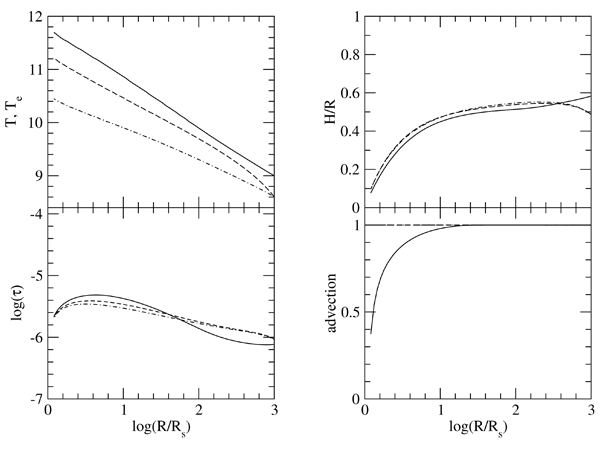 |
|
Figure 12: Profiles of temperature, optical depth, ratio of scale height to radius, and advection
factor (the ratio of advective cooling to turbulent heating) of a hot, one-
 ADAF (solid lines). The
parameters are ADAF (solid lines). The
parameters are  , ,  , ,  , and , and  .
The outer boundary conditions are .
The outer boundary conditions are  , ,  , and , and  . Two- . Two- solutions with the same parameters and
solutions with the same parameters and  (dashed lines) and 0.01 (dot-dashed lines) are also
shown for comparison, where (dashed lines) and 0.01 (dot-dashed lines) are also
shown for comparison, where  is the fraction of the turbulent viscous energy that directly heats
the electrons. Image reproduced by permission from [321], copyright by AAS. is the fraction of the turbulent viscous energy that directly heats
the electrons. Image reproduced by permission from [321], copyright by AAS. |
- Home
- Articles
sidebar
"Foundations of Black Hole Accretion Disk Theory"
Marek A. Abramowicz and P. Chris Fragile

